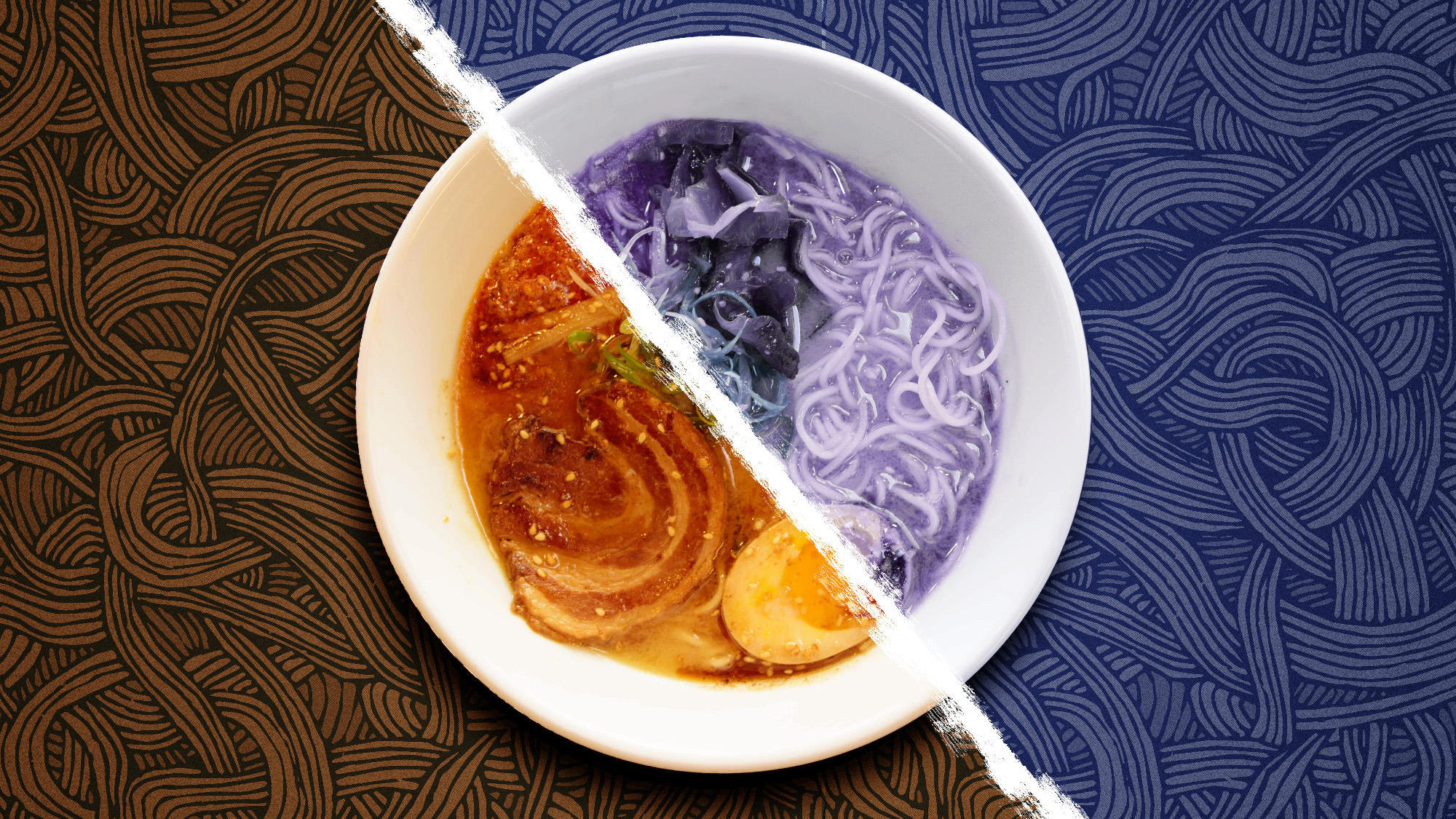Should You Cook Instant Ramen Noodles And Soup Separately?
Welcome to The Takeout's Asian Noodles Week, a tribute to the O.G. pasta bowl.
I could spend a few hundred words setting up this story, but the headline states it succinctly. I used to add the seasoning packet mix in the same pot of water I'd boil my noodles. Some years later, I would make the soup separately, thinking it would improve the final product. But does it really make any difference? Our Asian Noodles Week was a perfect excuse for some A/B testing.
I bought two packets of Sapporo Ichiban-brand shio ramen—not the fanciest noodles ($1 each), but a good baseline. For my first batch, per the instructions I brought two cups of water to a boil, added the noodles, cooked for three minutes, then removed from heat—at this point the water was cloudy—and dumped the seasoning packet into the pot. For the second batch, I also boiled noodles in two cups of water, but separately had a third pot boiling, which I'd dump in one of the seasoning packets and incorporated with the cooked noodles afterward. I had all this cooking simultaneously; the goal was to experience both bowls of noodle in close proximity.

The bowl on the left features both soup mix and noodle water cooked in the same pot. The bowl on the right had the soup mix and noodles cooked separately. You may notice a difference in volume—both were cooked with two cups of water, though more of the liquid evaporated in the all-in-one batch.
But upon closer inspection, there's a marked difference in opacity:

Both soups tasted overwhelmingly of salt and preservatives. But the one on the left—and it's not just my visual bias—had a subtly thicker viscosity to the liquid. It felt fuller on the palate, whereas the soup on the right had a clear and thin texture. Scanning through the ingredients list of the noodle brick, I suspected the culprit might be tapioca starch. But this was based on conjecture, so I turned to The Takeout's resident Ramen Lord, Mike Satinover. He replied in an e-mail:
"As far as I know, instant noodles were originally designed to be cooked and eaten with the same water. They definitely do release some starch, and even some oil, but this is by design as far as I can tell. Chikin Ramen, the original instant ramen by Momofuku Ando himself, actually had the seasoning coating the brick of noodles, not in a separate sachet. You just added boiling water to cook and it was good to go, no straining needed. Some manufacturers now suggest adding the seasoning initially, like with the instructions on Shin Ramyun. But there are exceptions; I've seen some other dried noodles that do suggest draining. I think it entirely depends on the manufacturer. But originally? It was a quick one vessel thing."
Satinover's phrasing, "by design," made a lot of sense. Here's my verdict: In this instance, I actually enjoyed the all-in-one pot version better. There was a noticeable difference in its richness. But this was also because it's what the instructions specified. Perhaps another brand of instant ramen would suggest boil-then-drain, but that's another brand. Once again, the simplest answer wins out: Follow the directions for optimal results.
